Anita Berber was a pioneering and controversial dancer from Germany. She had an eventful life, finding success on stage and screen (not to mention in her love life) during the Great War before ultimately meeting her end too soon.
A Stormy Background
It is something of a convention, when talking about a notorious celebrity of old, to claim that nothing in their origins could make one imagine their later fate. In many cases, it’s even true. However, Anita Berber’s family history had been as stormy as her own. Her father Felix was a violin prodigy who used to play at the Tsar’s court in St. Petersburg, in the Netherlands and in London. His son from his eventual third marriage described him as a man possessed by his art. Her mother Lucie was a chanson singer at Berlin’s Chat Noir, named after a more famous Parisian establishment.

Anita’s parents’ marriage was based on urgency (Lucie got pregnant, and Felix refused to abandon her) and almost ended in blood (during one of their famous stormy fights, Lucie tried to shoot her husband, and they finally separated on the 8th of November 1902). After the marriage was over, little Anita was taken to live with her grandmother and a company of aunts in Leipzig and then in Dresden, in a respectable middle-class milieu.
Her interest in dance started in an early age. Thankfully, Dresden was a fertile environment for it – a birthplace of German expressionism, it was also a home to Emile Jacques-Dalcroze, a famous inventor of the ‘rhythm-gymnastic’. It was created as a counterpoint to the stilted dances of the Prussian society, in order to develop in children and adolescents a sense of rhythm coming from their own heart.
Anita joined his class in 1912 with great enthusiasm. However, only two years later, she had to leave for Berlin with her mother: the Great War broke out.
The Great War
The fifteen-year-old Anita didn’t – and couldn’t – perceive the moment when the lamps went out all over Europe, or the years after, as the great historical event it was. For her, the war was simply the time of exhausting fear and premonition, lean years that she had to spend between queues for margarine and bread, fortifying herself with unsugared tea.
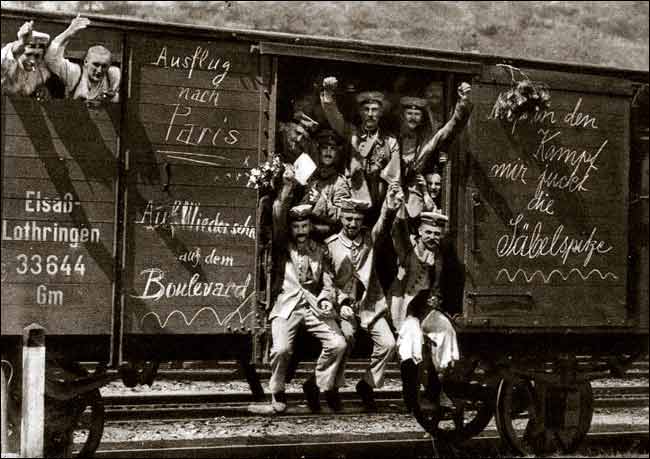
It is small wonder that, as soon as art offered a way out of this vicious circle, she took it eagerly, and joined the famous famous Rita Sacchetto Ballet School. In February 1916, in the cold middle of the war, Anita made her debut on the stage as a tender Zephyr.
In a way, her new teacher had been as unconventional as her old one, if in markedly different ways. Rita’s programme included such performance pieces as ‘Dante meets Beatrice’, or ‘Spring’ inspired by Botticelli, and, despite the classical loveliness of the pieces, she sometimes got in trouble with the government for their risqué performance. The amount of skin showed by her dancers in Indisches Madchen, for example, almost had her programme banned. The young Anita noted her exasperation in her diary, where she called these government men utter idiots.
She saw nothing wrong with Rita’s routines – in fact, she soon started to excel in them. The critics praised ‘Fraulein Berber as a Gothic Woman’, ‘Fraulein Berber as a butterfly’, and even ‘Fraulein Berber as a Harlequin’. With the troupe, she ended up touring Hannover, Leipzig, Frankfurt and Hamburg.
Going Solo
It is speculated that this sudden success of an ingenue has created a conflict with Rita, who didn’t take kindly to no longer being the star of her own company. As a result, in March 1917, Anita gave her first solo performance. It turned out to be a marvelous triumph, leaving the critics enthused with the naturalness of her manner and her acrobat-like flexibility.
Some appreciation of her looks came running, too – postcards with her depiction were printed swiftly, and such publications as Die Dame and Elegante Welt invited her to model hats and gowns for them. The latter magazine later even claimed that, with Anita’s coming, the Apollo Theatre in Berlin flared back to life. However, her true fame still lay far ahead, and its catalyst was called Sebastian Droste.

Well, technically he was called Willy Knobloch, but he long since decided that Sebastian Droste suited as a stage name much better, especially given the dark, thin, androgynous persona he was trying to project. He appeared on Berlin stage in 1920, and conquered the city’s fickle affections almost momentarily.
Anita was impressed with this proto-Bowie’s signature dance routine by the name of Opium Intoxication. Soon, they were collaborating together on the Spanish Dance. Their work at this innocently-named routine, however, was concealing their simultaneous preparation for a much riskier number – the number that is going to propel Anita to stardom, and which the critics are going to simply dub the naked dance.
Her first performance of its kind took place in the night club Alkazar in Hamburg. It started with her entering the stage in a slightly translucent blue shawl, a golden diadem, golden rings and earrings. Quite appropriately, the orchestra started playing a languid foxtrot called ‘Salome, the loveliest flower of the East’.
Then, to the gasps of the audience realizing her underlying nakedness, Anita slipped out of the shawl, and proceeded do dance in the ethereal white light.
Naked women on the stage were not unknown in Germany, but they were usually unmoving ‘living statues’ in tableaux vivant, the concept itself imported from France. Anita’s frank performance caused a divided reaction: some denounced it as pornography; some compared it to the bare visions of antiquity, and traced her artistic lineage to Isadora Duncan, who likewise scandalized Europe several decades ago by dancing barefoot.
An Instant Success
The success was instant, and it was dizzying and all-encompassing. Suddenly, young women looking for respectable beaus in night clubs were dressing ‘a la Berber’. Prostitutes were charging their clients extra for a Berber impersonation service. The film director Richard Oswald couldn’t get enough of her.
Although technically Anita’s debut in cinema took place in 1918, in a modest costume drama based on Franz Schubert’s life, it is Richard Oswald’s risqué films that dealt frankly with such topics as sex, homosexuality, and prostitution, that brought her renown in the world of cinema.
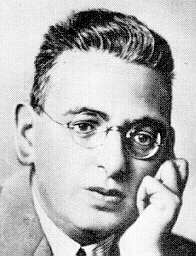
One of her pieces with the same director was titled ‘Anders als die anderen’ (‘Different from the others’), and featured two male violinists in love with each other whose affair is ruined by scandal and blackmail. The film was a great success not just in Berlin, but in Munich and Vienna – and became one of the reasons Richard Oswald’s name was later blackened by the Nazis.
Nowadays her contributions to film are almost forgotten, but her contemporaries went so far as to claim that there had been in Germany only three queens of the silver screen in the Twenties: Marlene Dietrich, Lya de Putti, and Anita Berber.
Her love life had been as scandalous as her career. It says a lot that the steady and safe romance option in her life had been Susanne ‘Susi’ Wanowski, the wife of a high-ranking police official and her lifelong friend. In 1922, she gained another admirer – Baroness Leonie Von Puttkamer, the pure-blooded daughter of an old family whose father used to possess 5 899 hectares of land in Pomerania. They used to meet in secret in Vienna so as to evade Susi – Leonie drove Anita to her house in the evenings and returned her to the hotel in the mornings. Later, in Berlin, Leonie even tried to smooth things over with Susi by gifting her some furs and two pearl rings.
Scandal and Exile
Anita loved Vienna, and even toyed with the idea of settling there forever.
However, these dreams came crushing down when, in January 1923, Sebastian Droste had been charged with drug-dealing and various other criminal enterprises, deported over the Hungarian border, and banned from Austria for a period of five years. Anita received the same ban. Technically, the charge read to her was that of ‘profaning Beethoven’s music’ that she used as a backdrop to some of her performances. However, everyone knew that the real crime had been her association with Droste – and her numerous affairs with women.
I dance death, illness, syphilis, absurdity, suicide, and yet no man takes me seriously.
Anita Berber
Once they came back to Berlin, Droste promptly abandoned Anita – taking her costly rings and pearls with him and absconding to New York. The partnership that propelled both to the heights of notorious fame was at an end.
Not one to mope around for long, Anita soon secured engagement at an establishment called White Mouse, where masks were offered for rent for those gentlemen and ladies who didn’t want to be seen in the audience of the notorious naked dancer. She also became a model for fashionable porcelain dolls, such as those made by Constantin Holzer-Defianti. This gifted Austrian had, among other things, made dolls of Lena Amsel and Anna Pawlowa.
However, dark tendrils of addiction were already creeping into her life. Anita has been sharing Droste’s addiction to cocaine, the ‘silver powder’, for several years; moreover, she was now often seen drinking cognac in unnerving quantities. To the health problems there was added the pain of not being understood as an artist.
‘I dance death, illness, syphilis, absurdity, suicide, and yet no man takes me seriously’, she complained to Dr. Sachse during their conversation in her changing room. They only saw the sexy nakedness.
A New Beginning?
A new dancer soon came to Europe from the US who took Berlin by storm: Henri Chatin Hoffman. He came from a German-Swiss family, so, technically, one could say he was returning to his roots. He opened his ‘Dance evening of modern music’ in Bluthnersaal on the 12th October 1923 with great success. Two weeks later, with a slightly amended programme that sent crowds equally wild, he danced to Strawinsky, Ravel, and finally a ragtime melody.
Anita was in love from the first sight, both with the artist and the man. The criminally inclined Droste was forgotten.
After Henri’s brief tour to Düsseldorf, the couple performed what was dubbed a radical ballet by the name of Shipwrecked together. Then they got married on the 10th of September 1924 and promptly embarked on a joint programme with a self-explanatory title of ‘Dances of Erotica and Ecstasy’.

However, despite the joys of love, Anita’s addictions grew even worse. During the tour of the revue production ‘World in the mirror’, she had to drink a whole bottle of cognac in order to appear on the stage. Her mood swings grew darker, too. When she and Henri went on a tour of Europe, she managed to get briefly imprisoned for insulting the King of Serbia.
As her health grew worse, she found, together with Henri, a refuge within one of the guest rooms of Magnus Hirshfeld’s Institute of Sexology. After a sojourn in a narrow, hospital-like room, Anita left the Institute with a sense of a new beginning: she and Henri decided to leave Europe altogether for a while, and departed on tour of the Middle East, travelling from Athens to Cairo.
Anita danced in the elegant hotels of Alexandria and murky bars of Beirut. She was proud to have never taken a drop of alcohol during that tour; however, the sudden abstinence wreaked harsh revenge upon her body, and her health was further weakened by the tropical climate.
On the 13th of July 1928, she went on stage with the programme ‘A Dance in White’. Like a great, exotic bird she made several timid steps – and then sank, helpless, upon the floor.
The doctor diagnosed a swiftly progressing lung disease.
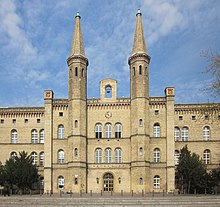
They had to break the tourney up mid-way, and speed Anita home. The journey had to be constantly paused, when her state grew worse, and the money was running out. Finally, in Prague, Henri found out that they had no money for a ticket to Berlin, and her old friend the cabarettist Willy Karzin had to organize a collection among their fellow artists to allow her to return home.
When she checked into Berlin’s Bethanien Hospital in Kreuzberg, few would have recognized the naked beauty of years past in the skeletal creature that she became. On her bedside table, she ended up keeping morphine syringes and little statuettes of Christ.
Her fight with death lasted a whole week. During that time, neither Anita nor her friends wanted to acknowledge she was dying. Sometimes she delighted them with her plans about a tour of Italy, and promises never to drink again.
She ended up passing away on the 10th of November at 9 p.m.. Henri was not with her – he had a performance at Weidenhofcasino with a new partner. This lady, whose name was Shelda, ended up becoming his next wife.
The journalists reporting Anita’s death referred to her as an ‘inflation dancer’.
She was buried at St. Thomas Cemetery in Neukolln four days after her death. Willy Karzin spoke at the service, representing the artistic community that had loved her.
Annabel Fielding has studied Media, Communications and Cultural Studies in Newcastle University, and later got her Master’s in Public Relations in the UAL in London. However, as a lifelong history aficionado, she spent most of her time there admiring local landmarks. Since then, she has published a queer historical novel A Pearl for My Mistress with HQ/HarperCollins.


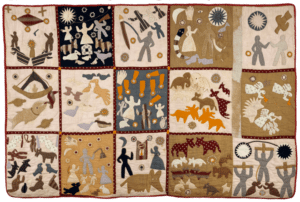

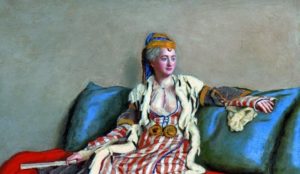


Leave a Reply